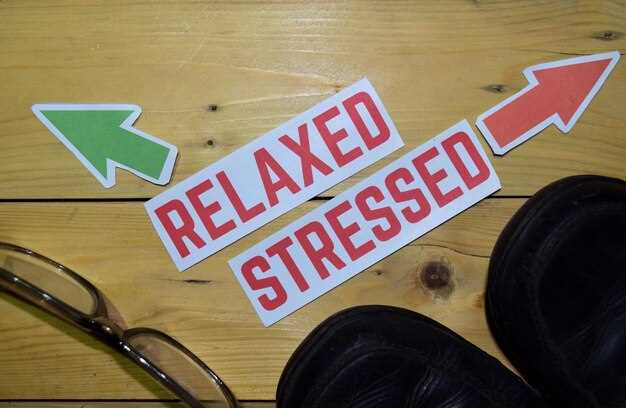Begin with a sixty-second grounding drill: inhale four counts, hold two, exhale six, repeat three cycles. This mindful pause lowers arousal and creates a balance between cognition and sensation. Visualize a known movie scene where a character finds steadiness; this demonstrates you are able to reframe the moment rather than letting tension rise.
Extend into a five-minute sequence: four rounds of paced breathing (inhale four, exhale six); a rapid body scan locating shoulders, jaw, belly; a brief relaxation gesture for each tense area; then a stable gaze on a fixed point to anchor attention, mindful focus; a relaxation response. This effective routine trains the nervous system to turn away from high arousal, fueling a steadier mood.
Over weeks, you become better able to hold calm longer. This routine helps you respond to stress rather than react, turning attention toward relaxation using a steady rhythm. Use the breath as fuel to sustain related goals; whilst you practice, you probably notice mood shifts, both subtle and meaningful.
As brodsky would suggest, brevity makes meaning; this approach keeps cognitive load low while preserving depth, offering a pragmatic path to balance during hectic days. The meaning here is practical: tiny, repeatable cycles train the nervous system, enabling calmer responses whenever stress spikes, probably improving mood and focus across tasks.
Immediate 5-Minute Reset Techniques You Can Use Right Now
-
Breath anchor: Box breathing for 60 seconds. Inhale through the nose for 4 seconds; hold 4; exhale for 4; hold 4. Repeat until body feels calmer. This simple cadence anchors the nervous system, reducing irritable mood at work.
-
Grounding scan: 5-4-3-2-1. Name 5 things you see; feel 4; hear 3; smell 2; taste 1. Your attention shifts to the present moment, reducing overwhelm.
-
Posture reset: Sit tall; drop shoulders; relax jaw; unclench fists. Pause for two breaths; feel gravity support your position.
-
Calming cue: Tell yourself this moment begins now; turn attention to a single comforting sound, a breath, or a texture.
-
Quick energy move: Stand, stretch arms overhead for 3 cycles; rotate wrists; sip water; keep gaze soft. These seconds restore alertness, reducing irritable mood at work.
For a shared moment, someone nearby can join; a brief group reset boosts focus for the whole team.
If someone else feels overwhelmed, invite them to participate.
Seem skeptical? This quick practice proves effective for many.
Where you sit, a quick rearrange improves comfort.
Experiencing a common surge of irritability? This set is related to simple, guided moves. A few seconds later, posture shifts; breathing slows; focus returns to the task ahead in the workplace. Most were surprised by waves of calm arriving, caused by paced cycles; momentum grows, productivity rises, yourself re-centered. If you felt burnt or lost, these steps help rearrange your environment without noise, enabling more calm, more focus, more productivity. Ultimately, the rhythm trains your nervous system to return to baseline.
5-Minute Breathing Reset: Box or 4-7-8 Pattern to Calm the Mind
Box breathing triggers a quick reset in under a minute. Box style cycles: inhale 4 seconds, hold 4, exhale 4, hold 4; repeat 4 cycles for about 60 seconds.
4-7-8 option: inhale 4 seconds, hold 7, exhale 8 seconds; repeat 4 cycles, about a minute total.
Choose one method daily; youre able to feel a shift. If you prefer variety, switch Box or the 4-7-8 method; most find a single option works best.
| Box breathing | Inhale 4 seconds; hold 4; exhale 4; hold 4. Repeat 4 cycles for about 60 seconds. |
| 4-7-8 pattern | Inhale 4 seconds; hold 7; exhale 8 seconds. Repeat 4 cycles for about 60 seconds. |
These tips boost wellbeing. Reclaim resting into life. Most know the feeling; listen to others. Priority to practice couple times daily. Advice helps deal with intense feelings. Practicing saying to yourself ‘I deserve back calm’ then learn to reset. youre able to handle calm or tense feelings, later respond with intention.
5-Minute Grounding Reset: 5-4-3-2-1 Sensory Anchors
Starting a quick grounding cycle: five things you can see, four you can touch, three you can hear, two you can smell, one you can taste.
Position feet flat, sit tall, breathe slowly for five cycles; inhale to five, exhale to five.
While you proceed, notice shifts: shoulders soften, jaw unclenches, chest expands, hands loosen. Doing nothing else is required.
If funks appear during a trip or busy moment, this brief anchor stays ready; it requires nothing else to begin.
This certainly supports wellbeing, becomes a priority, fuels the process of returning to the present; reach a calmer state sooner.
When a sensation feels physically difficult, you are able to start again; you wont need complex tools; just repeat starting steps, burned muscles included; if things seem heavy, breathe.
Upon completion, check mood; ready to call the next action while maintaining position, breathing; nothing else demands attention. Last, observe how mood shifts. This benefits both body, mind.
5-Minute Progressive Muscle Relaxation: Tension Release from Feet to Head
Step 1: Feet, calves–tense for five to seven seconds, then release; notice mood shift toward relaxed. A brief check-in after release shows changes in skin temperature, slower breathing, softer shoulders. Ready to proceed to next region, keeping attention on the sensation of ease.
Step 2: Calves, thighs–tense leg muscles five seconds, release; notice a break in edge of tension; watch signs such as smoother breath, lighter mood.
Step 3: Hips, abdomen, chest–tense core region five seconds; release; feel breath soften; ribs expand on exhale; notice less overall intensity in the torso.
Step 4: Shoulders, arms, hands–clench fists, flex biceps, press shoulders up briefly; release; feel muscles soften, posture settle, mood improving.
Step 5: Neck, jaw, face–tense neck modestly, bite lips or jaw, then release; observe tension drift away, facial muscles soften, eyes relax.
Next, set aside 60 seconds of quiet rest; guided cues keep focus sharp; these tips support consistency; during a stressful event fear or negative mood might spike; notice signs of recovery becoming faster; the aim lies in smoother mood transitions, better sleep, clearer thinking; daily practice builds a ready baseline.
These guided cycles are effective for experienced practitioners; still, experiencing high tension might occur; notice signs of relief; next cycles deepen the impact; goals include calmer mood, better sleep, steadier focus.
5-Minute Cognitive Reset: Pause, Label, and Reframe Distressing Thoughts
Pause for a minute, notice what feels loud, label the moment, then reframe the thought as a temporary signal that can be redirected toward a practical step. This quick action will sharpen focus rather than spiraling; results last only if repeated, again later if needed. Even when feeling down, this reset can help.
Step 1: pause. Step 2: label the pattern as unease, not fact. Step 3: reframe into a concrete action that helps wellbeing, such as a brief walk, talking with a colleague, or a quick breathing sequence. Such labeling makes goals tangible, related tasks simpler, leaving nothing specific.
Carry this into early shifts in the workplace; common triggers caused by fatigue appear in life; media headlines blur focus; a short music clip helps shift slumps into a natural flow. This technique helps you learn again; talking with colleagues, quick activities help sustain momentum.
Schedule a daily five-minute check, note what remains specific, such as triggers in life or workplace; then adjust changes. This technique trains patients to respond rather than react; they last well when repeated. Illness transitions or early symptoms can trigger this practice, while media, music, talking, activities support these shifts; they wont erase all symptoms, yet wellbeing grows over time.
5-Minute Movement Reset: Gentle Exercises to Break the Stress Loop
Which intensity begins here: a simple, low-impact sequence designed to shift feelings within minutes. Listening to feelings; arms stay relaxed; breathing steady; you keep moving without overexertion.
Move 1: Neck release – 60 seconds. Slowly tilt head toward the shoulder, pause at peak for a breath, return center, repeat to the other side, total 60 seconds.
Move 2: Shoulder circles – 60 seconds. Lift shoulders toward ears, roll back, then down; repeat in a smooth rhythm, keeping breath steady.
Move 3: In-place stepping – 60 seconds. March in place with light knee lift; arms sway mildly; aim for a neutral pelvis, tall posture.
Move 4: Hip circles – 60 seconds. Place hands on hips, feet shoulder-width apart, rotate hips clockwise then counterclockwise, breath in sync with circle.
Move 5: Arm openers – 60 seconds. Extend arms wide, circle shoulders forward, then backward, keep chest open, spine tall, belly soft.
Resting between moves is optional; if dizziness or lightheadedness appears, lean against a wall for support, then resume at a slower pace.
“Move gently,” says the guide.
Listen to sensations; whatever moment arises, keep moving at a comfortable pace; wherever you are, a few minutes here begin a reset that lasts daily looking toward calmer emotion.
Talking aside, a quick check-in using feelings stays useful.
Where last trace of tension sits, calm begins to arrive.
Dealing with issues becomes easier; motion serves as an anchor for emotion regulation and mood stability.
Overall, daily practice supports a calmer nervous system, reducing negatively colored responses to daily tension.
For anyone demotivated, these moves offer relief; Trying this in tiny doses is enough to start; beginning with one or two cycles keeps motivation high.
When to Reach Out for Help: Recognize Warning Signs and Next Steps
Take action now: talk to a trusted person or a professional within 24 hours if warning signs persist beyond a short slump. This move preserves wellbeing; it keeps your support network ready ahead of a larger challenge. It probably reduces pressure; it begins a safer process that prevents a tough day turning into a bigger crisis.
Look for symptoms such as fatigue that doesn’t lift after enough rest; sleep disruption; appetite shifts; difficulty concentrating. A heavy mood, tense muscles, or eyes that look dull signal a need for support. Burnt energy, slower speech, or irritability are also clues. If these signals recur, prioritize contact with someone you trust. These cues may be subtle; maybe you notice them in the way you interact with others or in your posture.
If risk rises or safety feels uncertain, contact local crisis resources or emergency services without delay. Reach out to friends, a family member, or a neighbor–someone who can stay nearby to monitor safety. Theyre trained to respond using calm care; this support helps you stay grounded, reduce risk, keep connection intact.
Create a brief plan that begins ahead of crises. List three people to talk to, a short message, plus your preferred contact method. Keep a compact list of symptoms, triggers, plus steps that help you stay afloat, such as a quick reset, a walk, or listening to energizing songs. This process fuels your wellbeing and reduces the chance of slipping into larger slumps. Keep the plan at hand; review it when signs emerge. That turn of attention becomes action, strengthening your support network.
When you reach out, start with your message ahead of a longer talk. A simple line like “I need support right now; I’m not feeling well,” sets clear expectations. If you prefer a call, say you want to talk soon. The initial contact begins a flow that draws attention to your wellbeing; a friend or someone you name responds using care; this support keeps you together, probably lowers risk.
Keep resources handy: crisis lines, a mobile contact list, and your plan stored in a reachable place without relying on memory. If you cannot stay home alone, contact a friend or a professional via telehealth. If you feel burnt, step away from the strongest trigger, focus on slow breaths, then return to your plan. This practice begins to rebuild fuel for your wellbeing.
Remember: inviting support keeps you from collapsing into silence. Your wellbeing rises through engaging alongside friends; eyes stay alert; talk remains part of the routine; you are not alone; someone is here to help.





